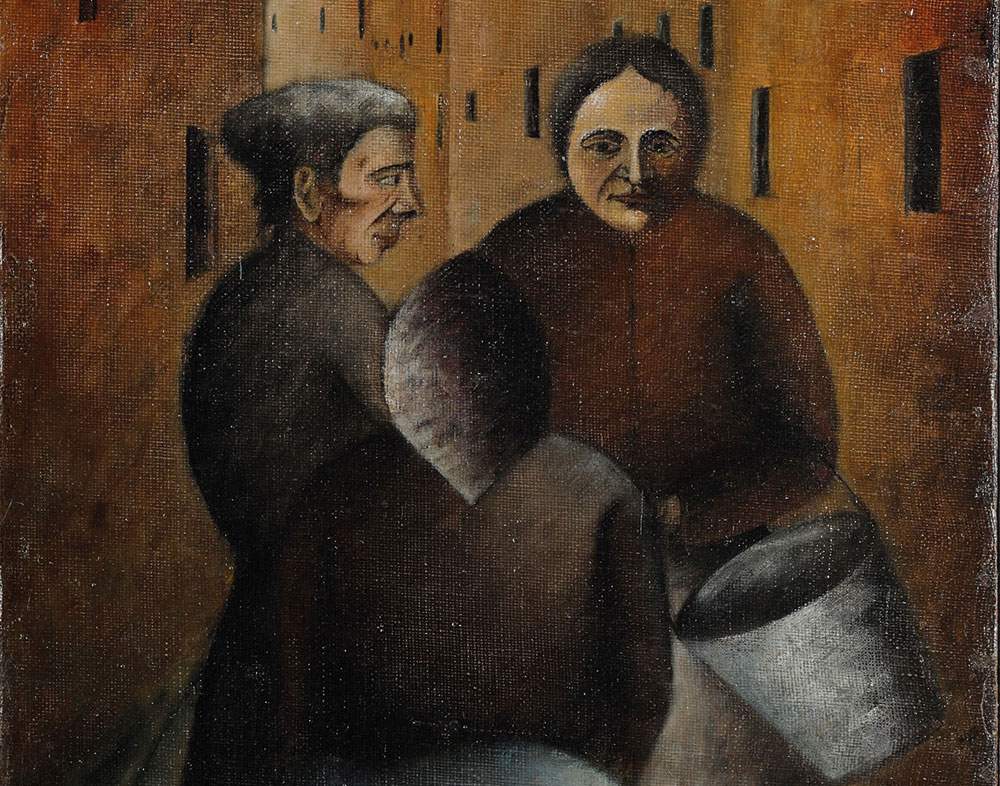Montevarchi, Ottone Rosai's art between the wars on display, including known and previously unpublished works
Inaugurated on Oct. 29, 2020, immediately gaining the interest of the public and the press, and then forced to close, like all museums and exhibitions on Nov. 6 due to the health emergency, the exhibition dedicated to twentieth-century artist Ottone Rosai (Florence, 1895 - Ivrea, 1957) set up in the Palazzo del Podestà in Montevarchi (Arezzo) has reopened to visitors and will remain open until June 27, 2021. A brief reopening had been granted from Jan. 21 to Feb. 12-a few days to admire the masterpieces on display thanks to valuable loans.
Organized by the Municipality of Montevarchi, the exhibition entitled Ottone Rosai. Masterpieces between the two wars (1918 - 1939) brings together fifty works by the celebrated artist, including drawings and oils, all between 1919 and 1932, or the two decades between the two great wars. Coming from private collections, the works on display are divided between some very well known and others totally unpublished. The latter constitute precisely the novelty and peculiarity of the exhibition, since they were discovered thanks to Professor Giovanni Faccenda ’s research within private collections and in the homes of those who, in the Tuscan territory and beyond, had relations with the artist or with his gallerists and heirs. Among the novelties is the discovery and identification of a 1932 painting, Baroncelli, erroneously presented in many publications as Landscape, ignoring the autograph indication on the verso of the painting, in charcoal, by Rosai himself. The work can be seen in the exhibition and was already featured in the historic 1932 Palazzo Ferroni exhibition. Also, the extraordinary discovery of a vinyl record in which Rosai, in his enveloping voice, reads two excerpts from his famous collection of short stories Via Toscanella.
Ottone Rosai is one of the most important Italian masters of twentieth-century painting, who was able to read the novelties of his time in the light of the art of fourteenth- and fifteenth-century Tuscany. After the praise that Soffici and the Futurists reserved for him on the occasion of one of his exhibitions held in 1913, when he was only eighteen years old, he left for the First World War: that experience ended with numerous heroic acts and various encomiums. For the first time, the exhibition curated by Giovanni Faccenda (Rosai’s greatest exegete and curator of the Catalogo Generale Ragionato delle Opere di Rosai) intends to focus on the artist’s production completed in the chronological span between the two wars, and intends to be unique in its kind for various historical and scientific peculiarities never before exhibited. The aim of the exhibition is to overcome a very often superficial and outdated reading of the art of one of the greatest Italian artists of the 20th century, appreciated by Francis Bacon, who in 1962 declared during a television interview: “I do not hesitate to mention the name of Ottone Rosai, one of the greatest painters of this century: especially the self-portraits and the nudes that he painted, the former at the beginning, the latter at the end of the 1940s, generated in me deep reflections and not a few winces.” Recently, Georg Baselitz has also purchased works by the Tuscan artist, demonstrating how Rosai’s painting is an expression of a contemporary voice.
The most famous works, such as Summer Follie, Partita a briscola, Incontro in via Toscanella, Il Fiaccheraio, are flanked by many previously unpublished works, such as Donne sulla panchina, the entire Carpani collection from Rome, Ragazzo fiorentino, a 1938 Landscape. Presented alongside the pictorial core is a corpus of his rarest and most valuable drawings, made in Florentine literary cafes and for the cultural magazines to which he collaborated.
The catalog includes accounts by writers, poets, intellectuals and art historians who supported Rosai’s art: among them, Soffici, Ungaretti, Palazzeschi, Gadda, Montale, de Chirico, Savinio, Bo, Malaparte, Montanelli, Testori and Pasolini.
You can visit the exhibition Tuesday through Friday from 4 to 7 p.m. and on Saturdays, Sundays and holidays from 10 a.m. to 8 p.m. The ticket office is located at the Territory Promotion Office, 89 Via Roma. The cost of the full ticket is 7 euros, and for the reduced ticket is 5 euros with the addition of 0.50 euros for pre-sale. Ticket purchase entitles the visitor to free admission to the Cassero Museum of Sculpture (open Thursday through Sunday and holidays from 10 a.m. to 1 p.m. and 4 p.m. to 7 p.m.). Online ticket booking and purchase can be made at https://discoverarezzo.ticka.it.
The exhibition also provides guided tours by ItineraCerta (phone 3297380387; email visite.palazzopodesta@gmail.com); tours are on Saturdays, Sundays and holidays from 1 to 3 p.m. and for groups at times outside the exhibition opening. The cost of the guided tour is 5 euros per person, duration about one hour.
For info: www.comune.montevarchi.ar.it
Image: Ottone Rosai, Meeting in Via Toscanella, detail (1922; oil on canvas, 70 x 35 cm)
 |
| Montevarchi, Ottone Rosai's art between the wars on display, including known and previously unpublished works |
Warning: the translation into English of the original Italian article was created using automatic tools. We undertake to review all articles, but we do not guarantee the total absence of inaccuracies in the translation due to the program. You can find the original by clicking on the ITA button. If you find any mistake,please contact us.





























